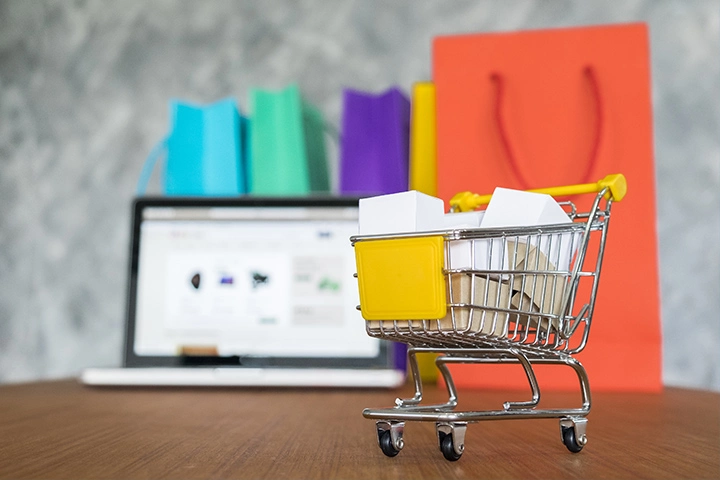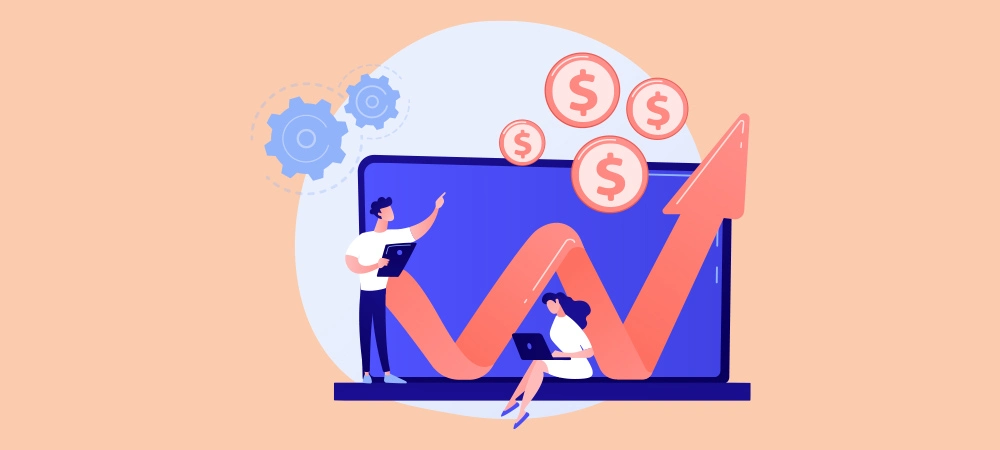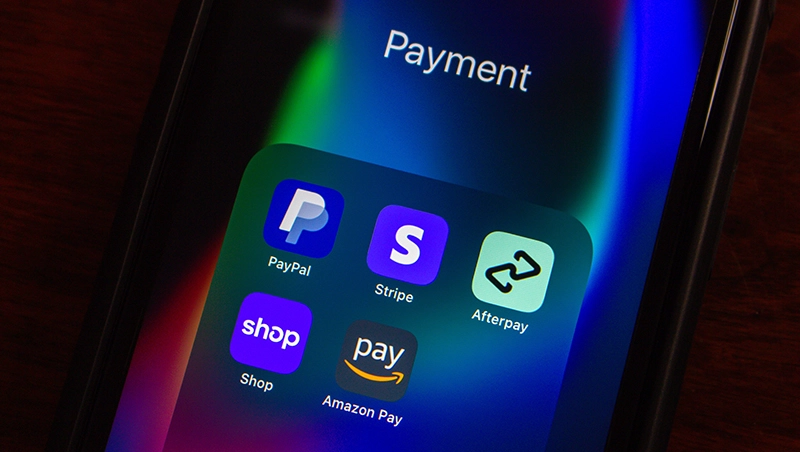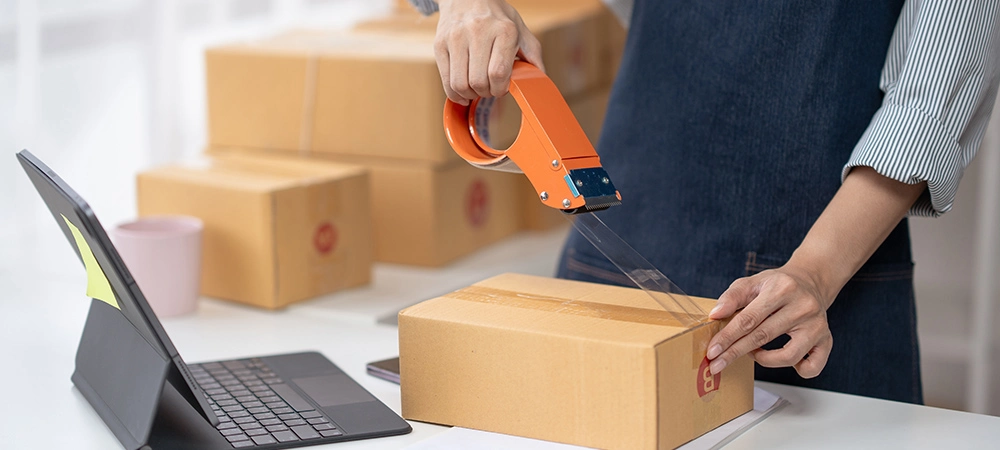How to Sell on Shopify: A 10 Step Masterclass

With bills that seem to constantly pile up, rent that only gets higher, and travel destinations calling your name, you have probably wondered how you can make a steady passive income. The good news is that almost anyone with an iPad, laptop, or even phone can set up an online storefront and start making passive income by selling products online. One of the most popular platforms for doing this is Shopify.
If you're wondering how to sell on Shopify, this guide will provide tips and tricks for making your Shopify store a success. From deciding what to sell to marketing your products with handy tools like Promeo, you’ll discover what it takes to sell on Shopify like a pro.
- How to Sell on Shopify
- Find a niche or competitive angle
- Establish your target audience
- Decide which products to sell
- Create product photos
- Create an online store
- Choose your sales channels
- Set up payment processing
- Choose your shipping methods
- Market your products
- Continuously improve your services
- How to Sell on Shopify FAQ
How to Sell on Shopify
Shopify is a commerce platform that allows you to sell to customers online and in person. For those seeking a low-cost entry into entrepreneurship, opting for an online Shopify store is one of the easiest ways to kick-start a passive income. Shopify makes setting up a digital storefront simple, allowing you to process payments, automate shipping, and market your products on numerous platforms.
Find out how to sell on Shopify, starting with choosing the right niche.
1. Find a niche or competitive angle

Due to the simplicity of building a digital storefront, there are now a plethora of online stores, making it difficult to stand out. To beat the competition, you'll need to find a niche or unique angle for your Shopify store. For example, perhaps you're a talented painter, but there are countless online stores selling framed artwork.
To find your niche, you might take a unique angle, offering pet portraits featuring trendy additions, such as a custom cat portrait based on a series of photos from each cat era. The goal is to find a niche you enjoy and has a high demand.
2. Establish your target audience

Before you start building out your product line or marketing your goods, you'll need to understand your target audience. Using the example from above, if you plan to sell custom pet portraits, you know you'll be selling to devoted pet parents. From here, you can start to do further market research into your audience. Try to answer key questions such as:
- What does my audience value?
- Where can I reach my audience? (e.g., Is your audience on TikTok, Instagram, Facebook, eBay, or other online platforms?)
- What inspires my audience to tap buy when interested in a product?
Try to uncover as many details as you can about your target audience. This will help you decide what to sell, when to sell it, where to sell it, and how to market to your audience.
3. Decide which products to sell

Whether you're reselling vintage clothing or customizing a handmade product, you need to consider what products are worth your time. This includes determining each product's profitability and demand.
You can approach this by opting for items that have a low profit but sell at a high volume. You can also choose to sell high-profit items that might take longer to move but offer you a large return on investment. In some cases, you might build out your Shopify store to feature a mix of these items. Be sure to keep your target audience in mind as you build out your product list.
4. Create product photos

Once you’ve decided on the products you plan to sell, you’ll want to ensure you have high-quality product photos available for your customers. You’ll use these product photos for your online storefront, ads, and more.
One of the easiest and fastest ways to create product photos is to use Promeo. This creative studio allows you to create product photos using your own images, stock photos, and customizable templates. You can download the app and quickly create flawless product shots by easily removing backgrounds and replacing them with custom backdrops or implementing stock imagery. Promeo not only makes it easy to touch up your product photos, resulting in professional content you can use across the web, but it also allows you to tap into the power of AI to generate thousands of variations to your product photos.
Download it for free below to edit your product photos using AI:
5. Create an online store

Now, you're ready to create your online store. Shopify allows you to quickly set up your storefront. It offers a variety of plan options, including a basic entry-level plan that is a great fit for beginners and those on a tight budget.
Generally, when you first get started, you’ll want to focus on building a primary landing page or homepage for your store, product pages, category pages, FAQs, a contact page, and an about page. These essentials will ensure that new customers can quickly find the information they're looking for and are an excellent foundation for building your brand.
6. Choose your sales channels

Once you set up your basic Shopify store, you need to pick what sales channels to use to sell your products. Shopify can be connected to numerous platforms, including Amazon, Walmart, eBay, Etsy, and more. You can also use social media platforms, such as Facebook, Instagram, TikTok, and YouTube, to turn followers into customers.
The channels you use will depend a lot on your target audience. For example, if you're targeting older generations, such as Boomers and Gen X, you might want to focus on Facebook and Instagram to increase your reach. Additionally, certain product types will do better on specific platforms. Etsy is great for customized items that are handmade, whereas Amazon is an excellent choice for high-quantity sales.
7. Set up payment processing

Another great feature of Shopify is how simple it is to set up payment processing. Payment processing allows you to take payments for products instantaneously and transfer those funds to your Shopify account. Then, you can transfer the funds to a bank account.
You can use Shopify to enable credit and debit card purchases, which are some of the most popular options for online purchases. You can also enable digital wallets like Apple Pay, PayPal, and Amazon Pay. The more options you offer, the more convenient your storefront will be for customers.
8. Choose your shipping methods

With your payment methods set up, it's time to determine how you'll ship products to your customers. The right shipping method depends on the products you're selling and the time invested.
First, decide if you'll offer domestic shipping only or international shipping. Domestic shipping is much simpler and lower cost. However, it will limit the reach of your store.
Next, decide whether to use a third party to handle shipments or manage fulfillment in-house. When designing custom products, managing fulfillment on your own can help expedite the process and allow you to keep costs low. However, if you're purchasing and selling a product, you might benefit from drop-shipping, where you never handle the inventory yourself.
9. Market your products
Regardless of how amazing your products are, the only way you'll make a profit selling on Shopify is by attracting customers and converting browsers into shoppers. For long-term sustainment, you'll want to retain customers and turn them into loyal shoppers.
High-quality marketing is the best way to accomplish all these tasks. To kick-start your store brand, download Promeo. This handy tool makes it easy to customize marketing materials that look professional and help drive your online sales.
To create marketing materials for your products, you’ll simply snap photos of your products and choose from stock imagery to design everything from sales ads to product reels. One of the best features in Promeo that makes it extremely user-friendly is the AI Magic Designer tool. This tool allows you to provide prompts to an AI generator, which will then turn your ideas into stunning marketing materials. Describe the materials you want and watch as, within seconds, the AI Magic Designer tool provides you with a variety of marketing options. Also, if you're feeling at a loss for words, the AI copywriting tool will quickly provide you with ideas for your ad copy.
You can choose your brand colors and upload your logo to ensure brand consistency across all your product marketing. Additionally, Promeo makes it simple to choose your aspect ratio for each marketing item. With the simple tap of a button, you can transform a product flyer into the right size product for Facebook, Instagram, TikTok, and more.
Using Promeo is an excellent way to cut down on your marketing costs. Hiring a professional graphic designer or marketing firm can rapidly eat away at your limited profits. Instead, with Promeo, you can transform your Shopify pages and market your products across any channel.
Download it for free below to create ads using AI:
10. Continuously improve your services

Listening to customer feedback is essential to improving your storefront. Read through reviews, send out customer surveys, and try to connect with your customers online. This will allow you to better understand what your customers like about your store and what you might be able to improve. Constant improvements will help ensure you stay ahead of the competition.
How to Sell on Shopify FAQ
If you're a beginner interested in selling on Shopify, getting started is simple. you'll need to set up an account with Shopify, choosing the right plan based on your needs. A Basic plan will be a great place to start for a new seller. From there, you’ll want to begin setting up your product pages, using a tool such as Promeo to design your product photos, reels, and ads. Promeo is an ideal tool for beginners who might not have formal graphic design experience. With built-in templates, AI tools, and easy drag-and-drop features, you can quickly design the imagery and graphics you'll need to start selling on Shopify.
The amount it costs to sell on Shopify will vary based on the plan you choose. Shopify’s lowest cost plan, the Basic plan, charges card rates of 2.9% + 30 cents USD for online purchases. Their highest-tier plan, the Plus plan, is designed for complex businesses and offers a customized, competitive card rate for high-volume merchants. One of the best ways to keep your costs low when selling on Shopify is to handle your own product marketing. For example, through the use of Promeo you can handle your own product photography, video reels, and ad templates without incurring the high cost of a graphic designer. The more ways you can DIY your product marketing, the more profit you can make on each product sold.
When you set up your Shopify account, you can connect your Shopify Payments to a bank account. You can connect a checking account that meets the requirements outlined by Shopify for your country, or you can use a Shopify Balance account.
Yes, you can actually make money on Shopify. One of the best ways to increase your earnings is to lower your overhead costs. For example, instead of hiring an expensive graphic designer to customize your product images, reels, and ads, you can use a free tool, such as Promeo, to do your own work. This allows you to quickly create custom product marketing without cutting into your earnings. As an entrepreneur, any chance to do your work in-house can greatly increase the money you make on Shopify.
Yes, Shopify can be an excellent side hustle. Shopify makes it simple to set up an online storefront, allowing you to sell products on the side. For a side hustle to be sustainable, you'll want to ensure it doesn’t take up too much of your day-to-day time. By using simple tools, such as Promeo, to handle all of your product marketing designs, you can dramatically cut down on the time you spend on graphic design. With Promeo, you can take a single product image and, through the power of AI, transform that image into numerous ads, reels, and templates in any ratio you need.





